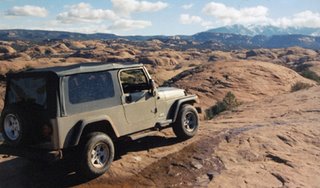TURNING POINTS OF HISTORY: Jeep

As World War Two broke out in 1939 America was watching from the sidelines. But its military leaders knew that they would have to develop a fast, reliable and stealthy vehicle that could take their troops wherever they were needed, if they were going to be successful in modern warfare.
For years, most of the major powers had been using motorcycles to do the dirty work of finding the enemy and moving information from the frontlines to their generals. But motorcycles were dangerous, often temperamental, and had virtually no carry capacity.
As the Nazi blitzkrieg swept across Europe, the need for a four-wheel drive vehicle that could go anywhere and carry a load suddenly became ever more urgent to America's top military brass.
Working under strict deadlines, the first prototypes for what would later be named "the Jeep" started rolling out in 1940 - and the designers and engineers who tested them immediately knew they had a winner on their hands.
Capable of a top speed of more than 60 miles an hour and with a pulling capability way beyond anything of its size, the new vehicle was almost unstoppable. By the end of the war, more than 700,000 Jeeps would be put into service.
From the earliest days of America's involvement in World War Two right through Vietnam, the Jeep kept earning its bragging rights as the vehicle of choice for wartime use. And it also made an indelible mark on the domestic front.
Although the Jeep line came dangerously close to financial ruin on more than one occasion, today's Jeep is a testimony to the original spark of genius that unleashed a whole new kind of vehicle on the automotive market. Often imitated, but never made obsolete, today's Jeep is one American original that just keeps on going.

0 Comments:
Post a Comment
<< Home